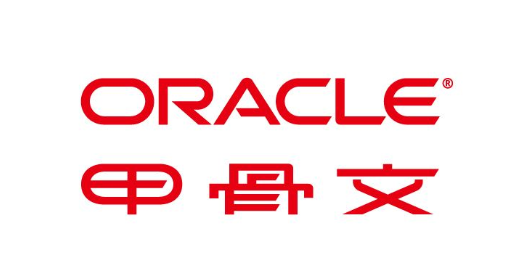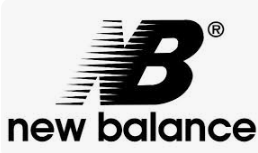Numerous things can go seriously wrong when selecting a brand name for use in China, due to the risks imposed by the country’s trademark law and the linguistic differences from English. When adapting a brand for the Chinese market, local staff will typically translate the name according to local custom, which often has unexpected or surprising results. This is because Chinese culture has a long history of giving the implication, sound, and complexity of names extremely close consideration. Sometimes, this results in large trademark related losses if proper precautions are not taken, as we’ll see below in the famous New Balance trademark lawsuit catastrophe.
Contents
New Balance lost big on poor brand name selection
Picking a brand name in China is a strategic decision
Staff in China apply traditional values when translating names for international companies
The traditional approaches staff in China take when translating brand names falls into one of four general categories.
- Most brands are translated by Chinese staff using phonetic transliteration. For example, Google sounds like “Goo-geh” and Amazon sounds like “Yamah Shun.” This strategy is commonly used because it can be used for almost any brand and maintains a phonetic connection with the parent company.
- Literal meaning translation is used where a brand name is translated to reflect its literal meaning. For instance, Apple is translated as Píngguǒ (苹果), the Mandarin word for “apple,” and Facebook translates to literally a “book of faces.” This method is less commonly used because of the limited number of English brand names that can be directly translated into memorable Chinese names.
- The blended transliteration and translation method blends meaning with the direct sound of the name. For example, Starbucks sounds like “singba ke” where the phonetic “sing” (the same as in Singapore) means “star,” and the “ba ke” phonetic lacks a specific meaning. This naming method is associated with particularly creative branding professionals.
- A seldom-used naming method in China involves selecting a name that has deep symbolic meaning in Chinese tradition. For example, computing company Oracle chose the name Jiǎgǔwén (甲骨文), meaning “Oracle Bones,” which were the ancient, inscribed bones in Chinese divination. At the same time, the selected name maintains a close cultural connection with the American company’s English name.

Foreign brand names adapted for the Chinese market generally underperform their Chinese peers. Amazon’s awkward-sounding transliteration Yàmǎxùn (亚马逊) lost to Alibaba’s meaning-laden Tmall and Taobao brands. Even worse, branding challenges create legal risks that can cause millions in litigation damages. The New Balance case demonstrates the financial importance of carefully managing branding strategy to avoid legal risks.
New Balance lost big on poor brand name selection
The New Balance company referred to is the internationally recognized sports brand. When New Balance entered China, its translators apparently ran the name through machine translation and got a name that fell flat with consumers, Xīn Pínghéng (新平衡), which gives a literal translation that has a meaning closer to “a new balancing.” No alternative names or other name selection strategies, particularly phonetic transliteration or blended meaning and phonetic transliteration, were considered, and New Balance neglected to file trademarks on alternatives when launching in China.

By failing to hedge its bets among multiple potential brand name choices, New Balance deprived itself of maneuverability in its long-term China branding and trademark strategy. Within several years of its launch, New Balance’s local staff found the name Xīn Pínghéng (新平衡), or “a new balancing,” to be severely disliked by consumers, and began communicating about the brand using a phonetic translation that resonated well with consumers– Xīn Báilún (新百伦). However, by then, a businessman named Zhou Lelun had also used the “lun” character in his name for a blended meaning and phonetic mark name meaning “New Hundred Lun,” also Xīn Báilún. In 2013, New Balance was sued for infringement by the prior holder of Xīn Báilún.
Initially, New Balance had trademarked the combination “NB” and Xīn Pínghéng for use in China. New Balance began sales in China in 2007. After operating for some time, the company opened an online TMall app flagship store using the name “Xin Bailun (China) Official Store.” New Balance gained popularity and brand equity in China over the following several years.
In 2013, businessman Zhou Lelun, whose Xīn Báilún brand he named after himself, sued New Balance in the Guangzhou lower court of appeals.
The trial found that the prior trademarks filed by Zhou Lelun in Báilún and Xīn Báilún were bona fide trademark owners entitled to protection under the law. The court reasoned that by using an identical or similar trademark to Báilún and Xīn Báilún, New Balance caused confusion among the consuming public in a way that infringed on the exclusive right to use Zhou Lelun’s registered trademarks, and therefore must immediately cease and desist, and pay damages for the economic losses it caused.
In determining damages, the trial court accounted for how New Balance used the Xīn Báilún mark to gain publicity for its products and estimated its gain to be CNY196 million. The willfulness with which infringement was used to make sales also aggravated the circumstances, raising damages against New Balance to half of their profits, a total of CNY 98 million (USD 14 million).
On appeal, the judgment was reduced to CNY 5 million (USD $700,000). The upper appeals court agreed with the findings of fact by the trial court, that is, Zhou Lelun had a valid trademark that was in use and legally protected, and New Balance’s use of the Xīn Báilún mark was infringement. The Chinese judge’s reasoning was consumers placed a greater emphasis on the high reputation of the New Balance, N and NB marks and the trademark’s reputation for quality. New Balance only derived a portion of its profits from infringement on Zhou Lelun’s trademarks. The Court rejected Zhou Lelun’s argument that his trademark goodwill or value of the infringing goods entitled Zhou Lelun to claim using the entire New Balance profits during the infringement period as the basis for calculating damages.
Furthermore, a third-party financial analysis report showed only profits of CNY 1.45 million, which is above the CNY 500,000 discretionary awards ceiling provided by the China Trademark Act. Thus, the judge held the original damage calculation to award Zhou Lelun’s claim was unreasonable in light of the financial evidence.
Thus, the Guangdong Upper Appeals Court fixed damages owed to Zhou Lelun by New Balance to be CNY 5 million, which it determined to be a reasonable amount. The original trial court decision was upheld, except as to the 50% profits as trademark damages calculation basis.
As a result of mistakes in the initial brand selection, New Balance was forced to pay substantial damages, and later, New Balance purchased the trademark rights from Zhou Lelun at additional cost.
The New Balance case is a good illustration of why a company should use professional translators and not rely on unprofessional workers, such as freelancers or in-house staff. Unqualified translators not familiar with trademark law are unlikely to identify translations that can be used to legally project the brand. In New Balance’s case, they seem to have relied on a law firm’s in-house staff, which lacked the expertise needed to protect them.
Picking a brand name in China is a strategic decision
Strategically, multinational companies looking at doing business in China have long registered defensive trademarks. Not only in order to prevent the theft of their brand equity and reduce threats from counterfeiters, but also in anticipation of possible future business needs.
Even for small businesses that have not done business in China or are not looking at doing business in the near future, this case shows a defensive registration strategy is necessary as an economic consideration.
The most effective and least expensive method for companies considering China is the mass registration of associated marks. When selecting a group of associated trademark names to register, learn from New Balance’s mistake and ensure your company is registering marks produced using all of the methods described above, including meaning based translation, phonetic transliteration, and blended meaning translation and phonetic transliteration.
Further Reading
To get an overview of how trademarks work in China generally, take a look at CBL’s China Trademark FAQ.